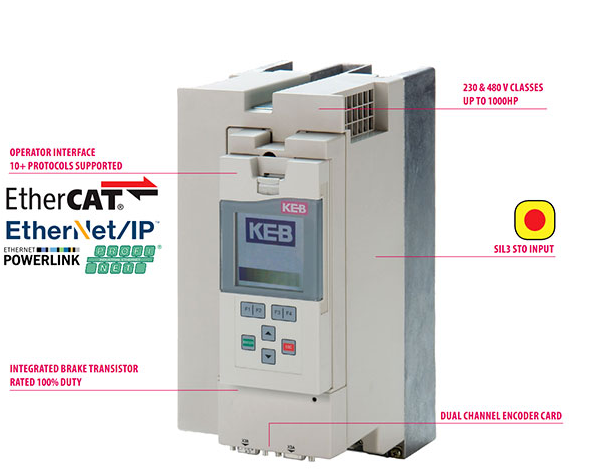Posted on 11th Jun 2024

Variable Frequency Drives (VFDs) have become indispensable tools for optimizing energy usage and enhancing control in industrial applications. However, a common question that arises is whether any motor can be used with a VFD. CM Industry Supply Automation helps you to delve into this topic to understand the compatibility and considerations associated with using VFDs with different types of motors.
Variable Frequency Drives are electronic devices designed to control the speed of AC motors by varying the frequency and voltage supplied to the motor. While VFDs offer numerous benefits such as energy savings, precise control, and extended equipment life, not all motors are suitable for use with VFDs.
Induction Motors: The most common type of motor used with VFDs is the induction motor. These motors are generally well-suited for variable speed applications and can achieve efficient operation when paired with a Lenze Drive. However, not all induction motors are designed for use with VFDs. Motors specifically labeled as "inverter-duty" or "VFD-rated" are recommended for use with VFDs as they are built to withstand the electrical stresses associated with variable frequency operation.
Synchronous Motors: Synchronous motors are another type commonly used in industrial applications. While some synchronous motors can be used with VFDs, they require additional considerations due to their design and operating characteristics. Proper synchronization between the VFD and the motor is essential for optimal performance, and specialized control algorithms may be necessary for certain applications.
DC Motors: While VFDs are primarily designed for use with AC motors, it is possible to use them with DC motors through the use of additional components such as rectifiers and inverters. However, this approach adds complexity and cost to the system, and DC motors are less commonly used in modern industrial applications.
Motor Design: When selecting a motor for use with a VFD, it is essential to consider the motor's design and construction. Motors rated for VFD use are typically designed with features such as insulated bearings, inverter-rated insulation, and improved cooling to withstand the higher voltage and frequency variations generated by the VFD.
Application Requirements: The specific requirements of the application should also be taken into account when selecting a motor for use with a VFD. Factors such as torque, speed range, and duty cycle will influence the choice of motor and VFD combination to ensure optimal performance and efficiency.
Compatibility Testing: Before integrating a motor with a VFD, it is advisable to perform compatibility testing to verify that the motor and drive are compatible and operate smoothly together. This may involve conducting insulation resistance tests, voltage and frequency checks, and dynamic performance evaluations.
While Variable Frequency Drives offer unparalleled flexibility and control in industrial applications, not all motors are suitable for use with KEB Drive It is essential to select motors specifically designed for VFD operation and consider factors such as motor design, application requirements, and compatibility testing to ensure optimal performance and reliability. By carefully evaluating these factors, industries can leverage the benefits of VFDs to achieve greater energy efficiency, productivity, and control in their operations.